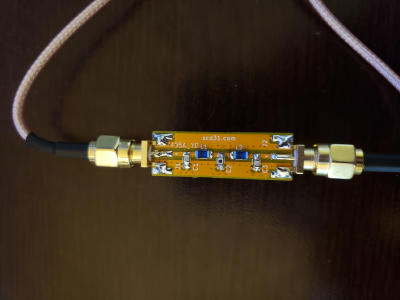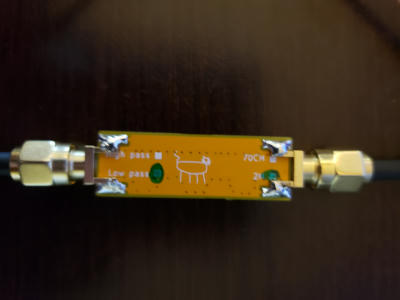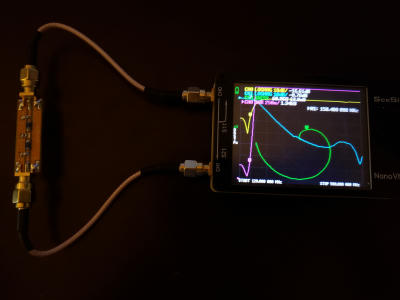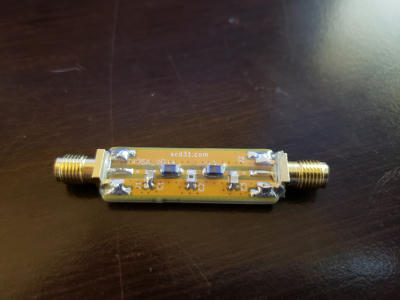Lately I've been spending a lot of my time working on a communications system for a high altitude balloon. We have multiple transceivers onboard, operating on different bands. To prevent interference, I thought I would get some tiny RF filters. Turns out these are kind of hard to find, and they're not cheap either. No bother - I'll just design my own!
This is the completed product (other than the clear heatshrink I added later). It's absolutely minuscule, and it could be even smaller if I had used the right footprint for the SMA connectors!
I designed the board in KiCad, and picked the component values using this incredible filter design tool. I picked an order of 5 and a cutoff frequency of 160MHz. Components were sourced from Mouser. I was surprised how expensive surface-mount RF-capable passive components are! I paid upwards of $2/component for some things.
I intentionally designed it so that parts could be chosen at build time. Different components would allow you to build a high pass filter, or a filter for a different band. I added some text to the back of the board to make it obvious which board is which. I also designed a band-pass filter and a 2M/70cm diplexer. Today, I decided to build a 2M low-pass filter.
Here it is connected to my NanoVNA:
At 150MHz, just over the top of the 2M band, the insertion loss is -0.78dB. Not terrible, but there's room for improvement by choosing better components. The calculator says -0.2dB is the theoretical maximum.
At 420MHz, below the 70cm band here in Canada, the insertion loss goes all the way up to -37.04dB. The calculator says it should be about 10dB lower, so there's definitely room for improvement here. That said, it'll still work fine for my purposes. I'm mainly noting this so I know not to expect to run a filter near it's theoretical limit. To be honest, I'm a bit worried about the diplexer I designed now! The isolation might not be high enough.
Here it is with the heatshrink tubing on:
Overall I'm really happy with how it turned out. It was a super simple project and I spent under $10 per filter. I think this would be a good candidate to have a PCB assembly service build me a few dozen. With the cost of parts in China I bet I could bring the cost down significantly.




